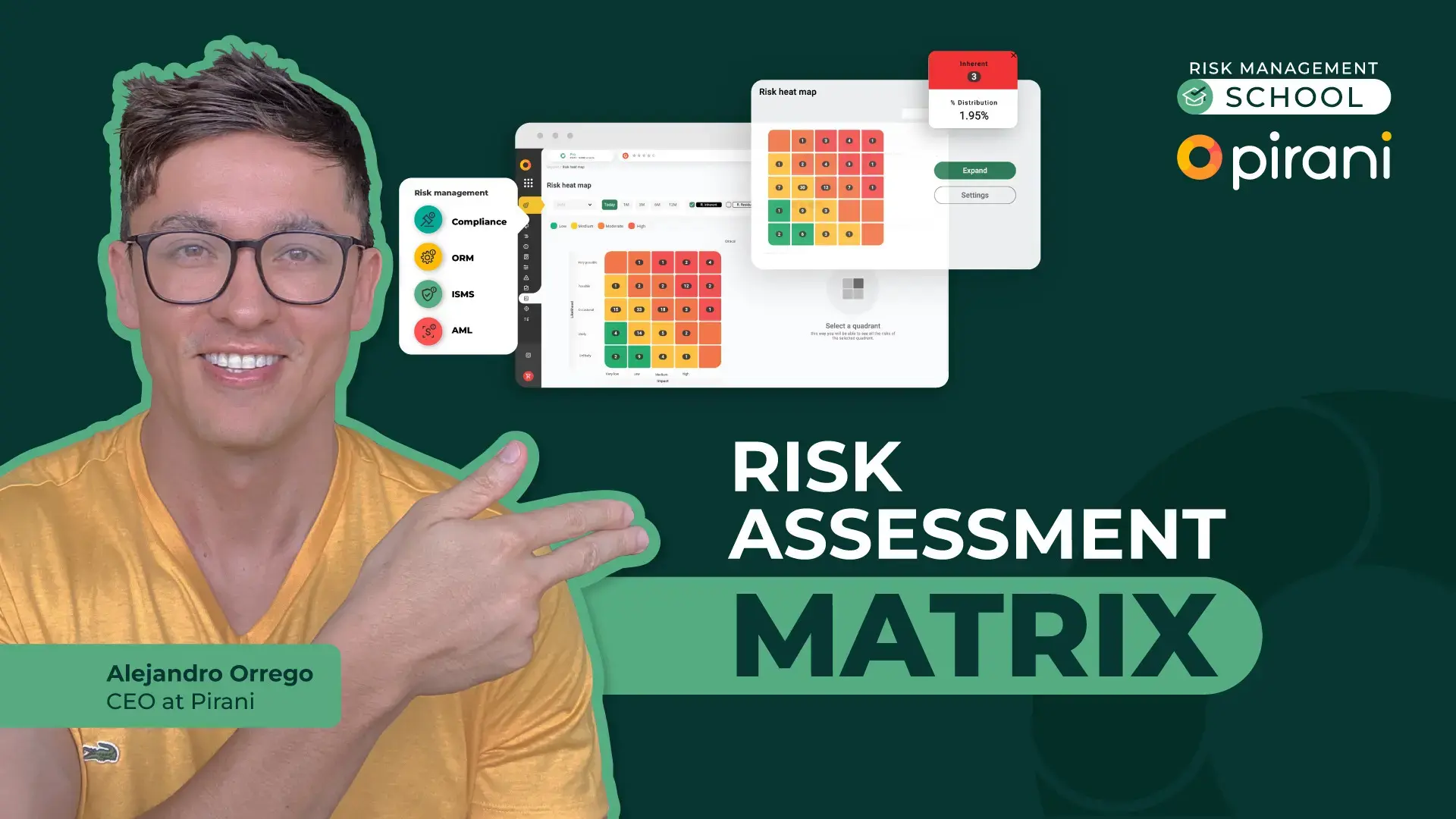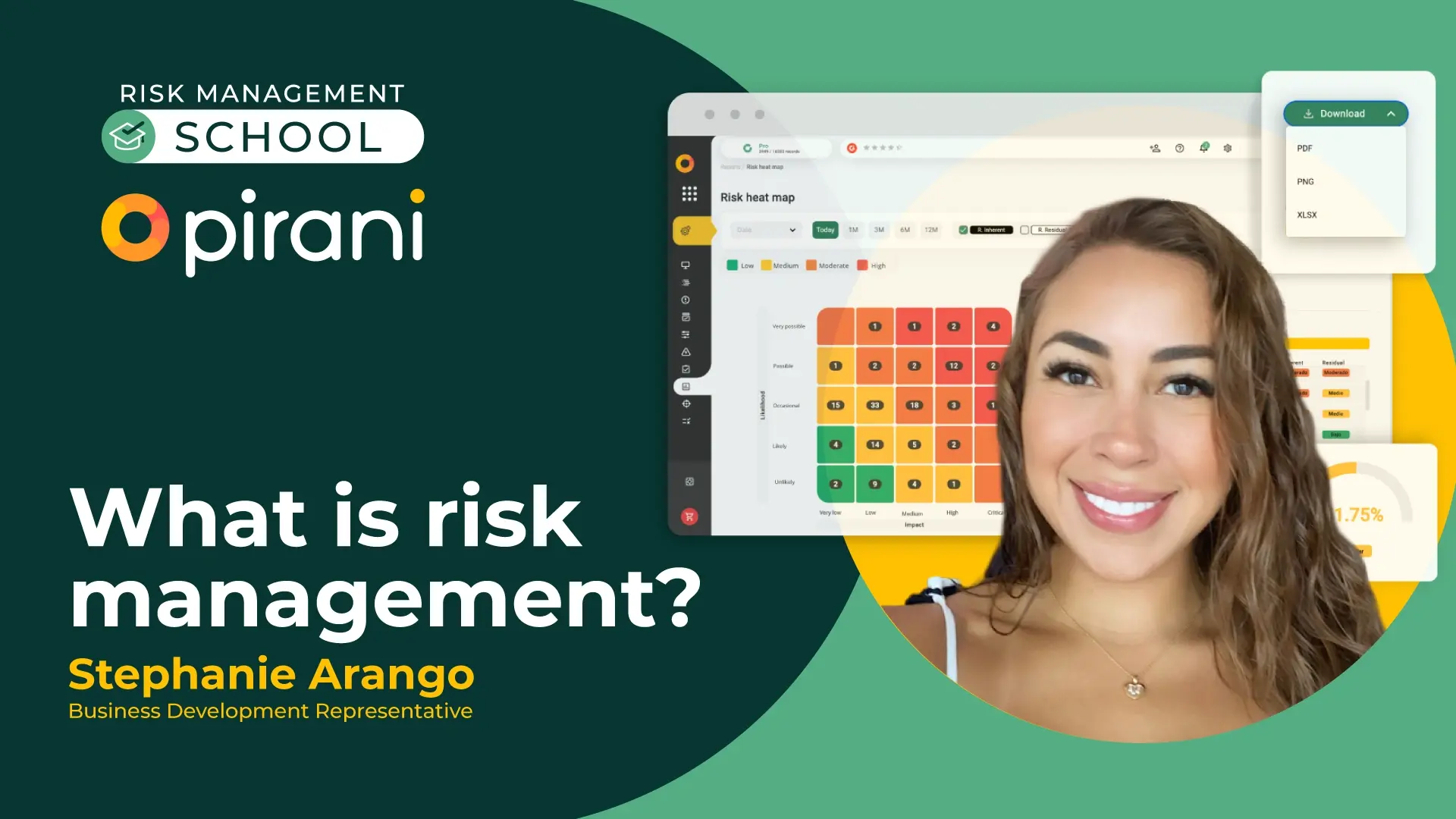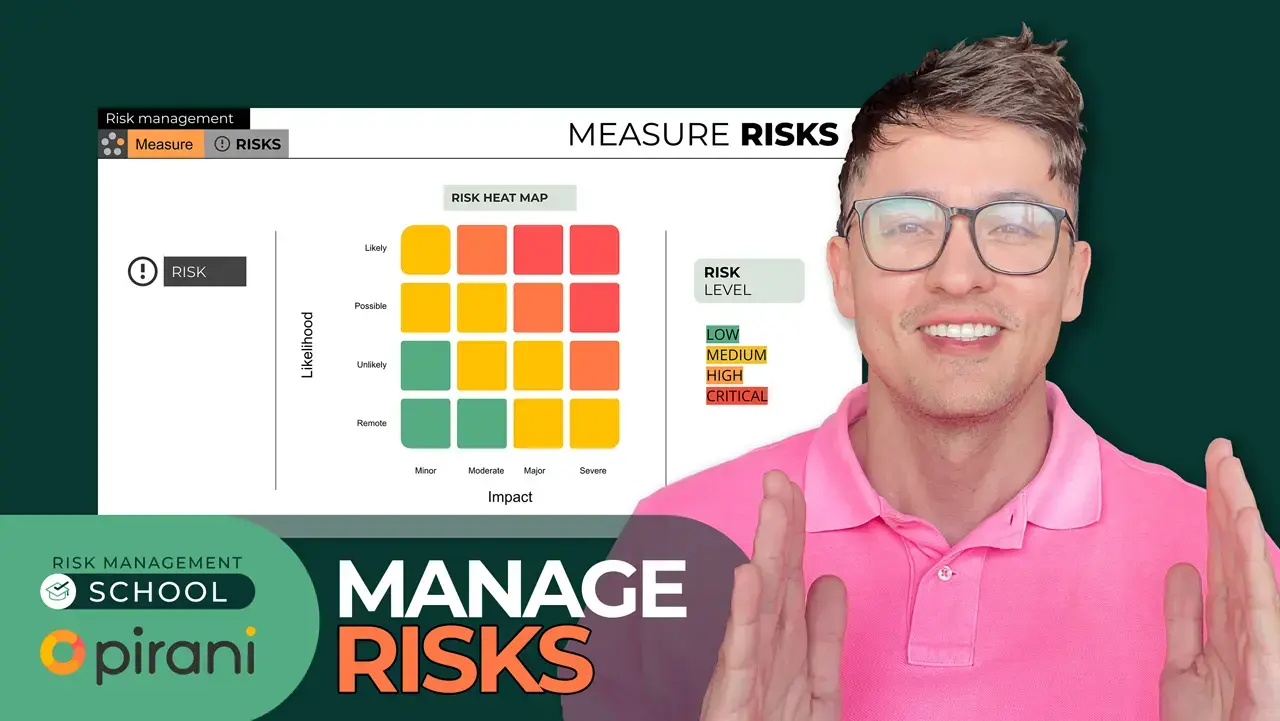How to make a risk management matrix
by Risk Management School on 26 de October de 2023
In this session, Ernesto Esquivel, Sales Development Representative at Pirani, teaches us the importance of Risk Management, the benefits of Using a Risk Management Matrix, Steps to Create a Risk Management Matrix, examples, and Best Practices. Use Pirani for free!
Importance of Risk Management
- Risk management is a process used to identify potential risks and develop strategies to address and mitigate them.
- It is an essential part of any successful business and vital for operations' long-term sustainability.
- Risk management aims to reduce unexpected losses and ensure the security of a company’s assets. Or to identify what areas are optimal for investment within the company.
- Businesses must manage their risks effectively, as it can help protect against financial losses, reputational damage, and operational disruption.
Good Examples
- Patagonia: Patagonia continues to offer replacements, repairs, and refunds to anyone unhappy with their products. Similar guarantees are hard to find in any retailer or industry. Add the firm’s dedication to eco-friendly causes, and you’ve got a reputation that’s hard to beat.
- Most restaurants have a quality assurance person who ensures each plate comes out correctly.
What is A Risk Matrix?
- A risk matrix is a tool to identify, assess, and quantify risk.
- It helps to visualize and prioritize risks based on their likelihood and potential impact.
- The matrix helps managers and personnel decide how to act when faced with the risks most likely to happen.
Benefits of a Risk Matrix
- Risk Prioritization: A risk matrix provides a clear visual representation of risks, helping prioritize them based on their potential impact and likelihood. This prioritization allows you to focus on addressing high-priority risks first, ensuring efficient allocation of resources.
- Improved Decision-Making: A risk matrix enables better-informed decision-making by quantifying and visualizing risks. It provides a structured approach to understanding and managing risks, crucial for making sound choices in projects, investments, or business operations.
- Enhanced Risk Communication: The risk matrix is valuable for communicating complex risk information to various stakeholders. It simplifies the representation of risks, making it easier for non-experts to understand and engage in risk discussions.
What Makes A Risk Matrix?
A Risk Matrix is made up of:- Risks
- Defined Mitigation Strategies
- The Likelihood and Impact of Each Scenario
Before making a risk matrix, you must define a framework or methodology for risk management, for example, the ISO 31000 standard or the COSO framework.
Creating A Risk Matrix
1. Identify Risks: While considering the scope and context of various processes within a company, you need to identify risks! Some examples are:
- Natural disasters such as earthquakes, floods, fires.
- Interruption in the supply of raw materials.
- Data leakage or interruption of technological infrastructure.
2. Assess Likelihood and Impact of The Risks: Establish how likely a risk is to materialize (very unlikely, unlikely, possible, likely, very likely) will depend on a review of the risk history, the opinion of experts in the area to which the risk pertains, and even geographic location.
For example, if your business is in an area prone to hurricanes or storms, the likelihood of natural catastrophes will be higher.
3. Define Mitigation Strategies/Create Controls: Develop strategies to mitigate or control high-priority risks. These strategies help reduce the likelihood or impact of risks. Some examples are:
- Having the lead developer create documentation on their code so that others can read it and understand what the code does in case the developer leaves the company.
- Having a list of other suppliers that can supply your company with the needed materials in case your primary supplier can’t for some reason
Putting It All Together
- Your matrix will look something like this.
- Pro Tip: Use Colors!
- Best Practices:
Regular Updates
Involving Stakeholders
Monitoring and Review
You May Also Like
These Related Stories

Risk Assessment Matrix

Risk Management and ISO 31000: What You Need to Know


No Comments Yet
Let us know what you think